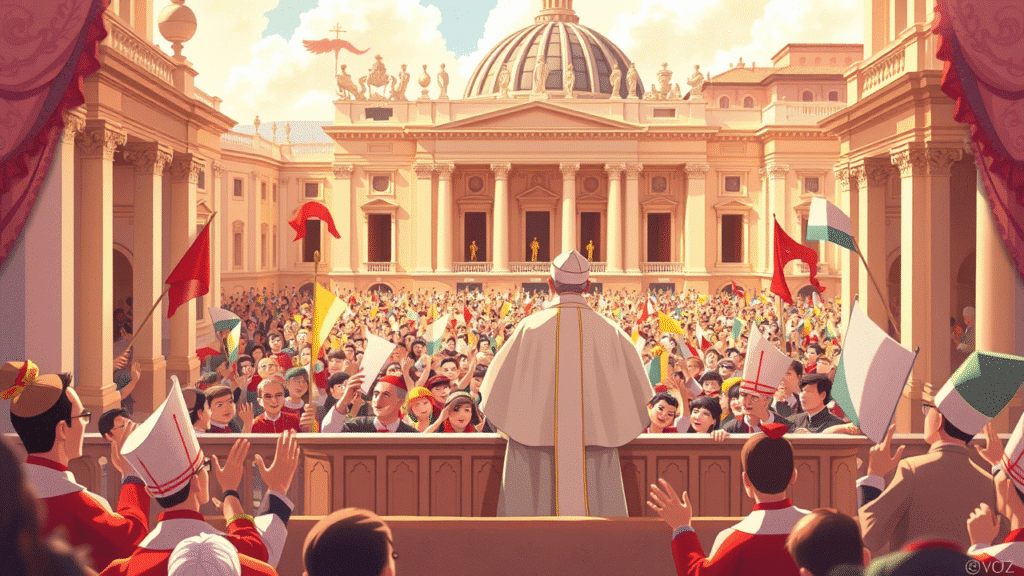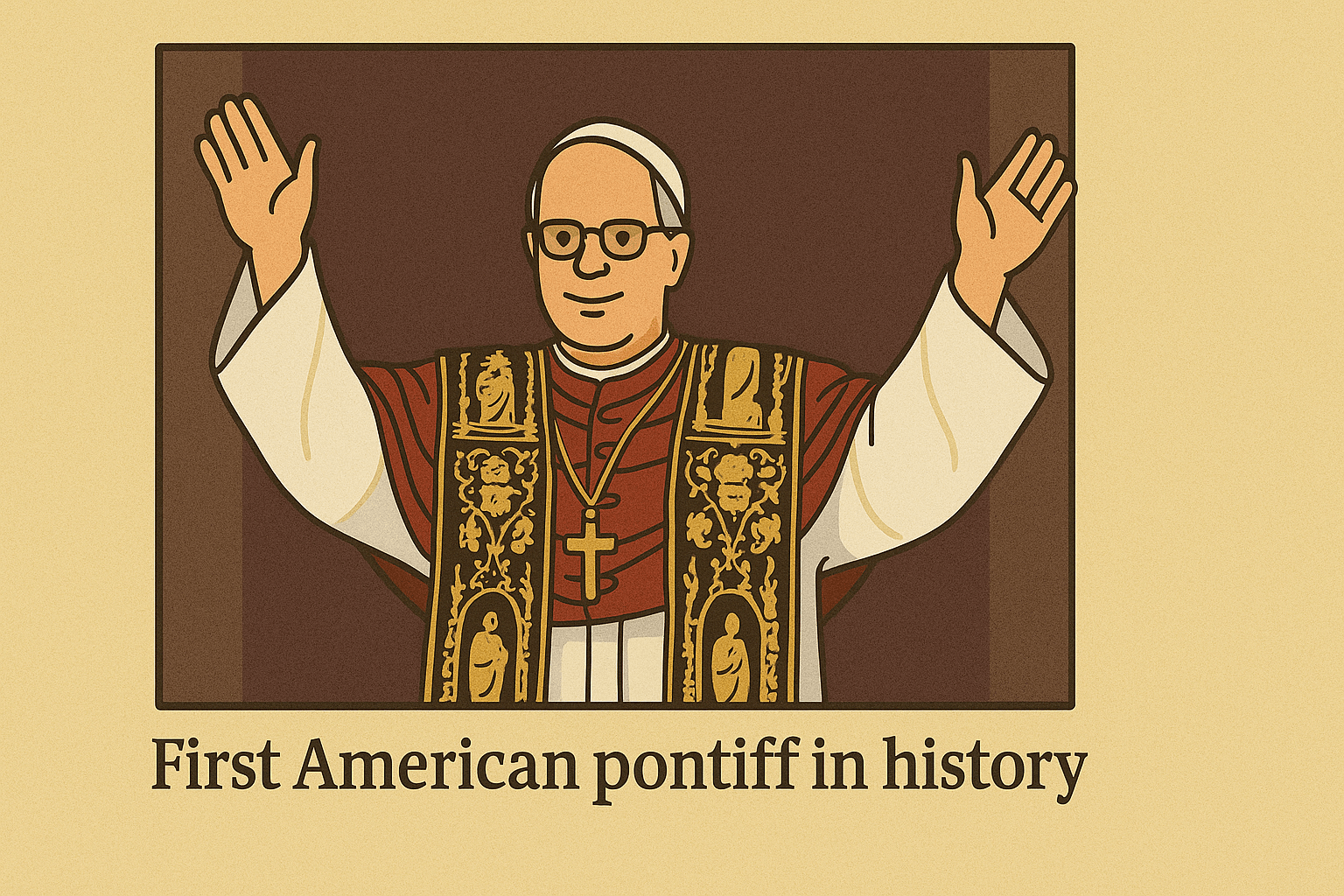
In a historic turn for the Catholic Church, Cardinal Robert Prevost, an American-born missionary with deep ties to Peru, was elected as the new pope following the passing away of Pope Francis. Taking the name Pope Leo XIV , he becomes the first Pope from the United States in the 2000-year history of the Church—a milestone that has sparked global interest and reflection on leadership, nationality, and the evolving identity of the Catholic Church.
Table of Contents
Who is Pope Leo XIV?

Robert Prevost , born in Chicago, Illinois, is a member of the Augustinian religious order and has spent much of his life serving the Church in Latin America. Ordained as a priest in 1982, Prevost worked as a missionary in Peru , where he developed a strong pastoral heart and a deep commitment to the poor and marginalized.
He later rose through the ranks of the Church hierarchy, serving as Archbishop of Chiclayo in northern Peru and then as head of the Vatican’s Congregation for Bishops , one of the most influential offices in the Roman Curia. This office plays a crucial role in recommending candidates for bishop positions around the world, giving Prevost significant influence even before becoming pope.
Pope Francis elevated him to the rank of cardinal , signaling his trust in Prevost as a potential successor.
A Papal Name with Historical Significance
Upon his election, Prevost chose the name Leo XIV , drawing from a long line of popes who have borne the name Leo. The name often symbolizes a desire to restore moral and spiritual authority within the Church, echoing previous Leos such as Leo XIII , known for his engagement with modern social issues.
His first words, “Peace be with you, ” reflect continuity with Pope Francis’s emphasis on peace, mercy, and outreach. However, his decision to wear the traditional red cape —a gesture Pope Francis largely avoided—signals a subtle shift toward traditional papal symbolism.
Learn more about Pope Francis and his mission of compassion, reform, and service by clicking here.
Breaking Barriers: Why a U.S. Pope Was Considered Unlikely
For decades, there has been an unspoken taboo against electing a Pope from the United States. Many cardinals were wary of combining the immense geopolitical power of the U.S. with the spiritual leadership of the papacy, fearing it could compromise the Church’s neutrality and global credibility.
However, Prevost’s election broke this barrier, in part because of his dual identity : although born in the U.S., he became a naturalized Peruvian citizen and lived for over 30 years in South America. His deep roots in the Global South, rather than the Western political sphere, made him a more palatable candidate to many cardinals.
To explore the rich history and diverse cultural heritage of Punjab (History & Culture), please click here.
Pope Francis’s Influence and Legacy
Pope Leo XIV is widely seen as a continuation of Pope Francis’s legacy. Like his predecessor, Prevost emphasizes:
- Missionary evangelization
- Dialogue across cultures and religions
- A Church that is poor and for the poor
Francis had clearly identified Prevost as a key figure in the future of the Church, appointing him to lead the Congregation for Bishops in 2023—a position often described as the “prime minister” of the Vatican due to its wide-reaching influence.
This close alignment suggests that Pope Leo XIV will likely continue the reforms and priorities initiated by Pope Francis, including efforts to decentralize power in the Church and empower local bishops’ conferences.
To learn more about English grammar and improve your language skills, please click here.
Implications for the Global Catholic Church
The election of a U.S.-born Pope marks a significant symbolic shift for the Catholic Church. While Europe and Latin America have historically dominated papal leadership, Leo XIV represents a blend of North and South, tradition and reform.
His background in mission work and episcopal appointments gives him unique insight into the challenges facing the Church worldwide—from declining attendance in Europe to rapid growth in Africa and Asia.
Moreover, his dual heritage may help bridge cultural and geopolitical divides, reinforcing the Church’s identity as a truly global institution .
The Papal Conclave: How a New Pope is Elected
The election of a new Pope, known as a papal conclave , is a formal and sacred process that takes place when the See of Rome becomes vacant—either due to the death or resignation of the previous Pope. All Catholic cardinals under the age of 80 are called to Rome to participate in the conclave. These electors gather in the Sistine Chapel and are kept in seclusion to ensure they can discern their choice without outside influence.
Inside the chapel, cardinals vote through secret ballots. A candidate must receive at least two-thirds of the votes to be elected Pope. If no decision is reached in the early rounds, voting continues over several days. To signal progress, ballots are burned after each round—black smoke (fumata nera ) means no decision yet, while white smoke (fumata bianca ) announces a successful election. Once chosen, the new Pope is asked if he accepts the position and which name he will take. The moment is made public with the traditional announcement “Habemus Papam ” (“We have a Pope!”), marking the beginning of a new papacy.
To access comprehensive articles and resources related to Punjabi Grammar , including lessons on syntax, vocabulary, and sentence structure, please click here.
The Role of India in the Papal Election
India plays a significant role in the global Catholic Church, especially during the election of a new Pope. Currently, four Indian cardinals are eligible to participate in the papal conclave as electors. These cardinals are:
- Cardinal Filipe Neri Ferrão (Archbishop of Goa and Daman)
- Cardinal Baselios Cleemis (Major Archbishop of the Syro-Malankara Catholic Church)
- Cardinal Anthony Poola (Archbishop of Hyderabad)
- Cardinal George Jacob Koovakad (Dicastery for Bishops at the Vatican)
As members of the College of Cardinals, they have the important responsibility of voting for a new Pope when the See of Rome becomes vacant. Their participation reflects the growing influence of the Church in India and highlights the country’s contribution to global Catholic leadership.
To enhance your English vocabulary with helpful articles, word lists, and practice exercises, please click here.
A New Chapter Begins
With Pope Leo XIV’s election, the Catholic Church enters a new era marked by continuity, change, and renewed hope. As the first U.S.-born Pope, Prevost brings both fresh perspectives and deep experience to the role. Whether navigating international diplomacy, guiding internal reforms, or preaching the Gospel message of peace and justice, Pope Leo XIV stands poised to leave his own mark on history.
For the latest current affairs and articles covering national, international, and trending topics, please click here.
Static General Knowledge for Competitive Exams
| Country | Capital | Head of State / President | Currency |
|---|---|---|---|
| United States | Washington, D.C. | President Donald trump | US Dollar ($) |
| Peru | Lima | President Dina Boluarte | Peruvian Sol (S/) |
| Vatican City | Vatican City | Leo XIV (as Sovereign) | Euro (€) |
Notes:
- United States : The capital is Washington, D.C. , not a state but a federal district. The President is both head of state and government.
- Peru : The capital is Lima , and the President serves as the head of state and government.
- Vatican City : The smallest independent state in the world, it has no elected president. The Pope is the sovereign ruler, and it uses the Euro (€) due to a special agreement with the European Union.
